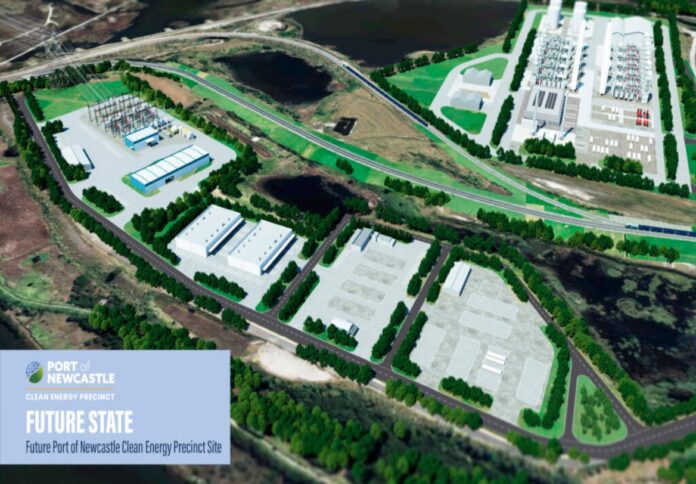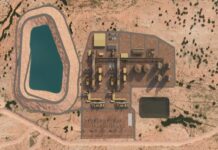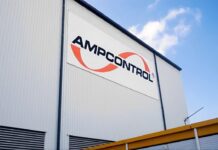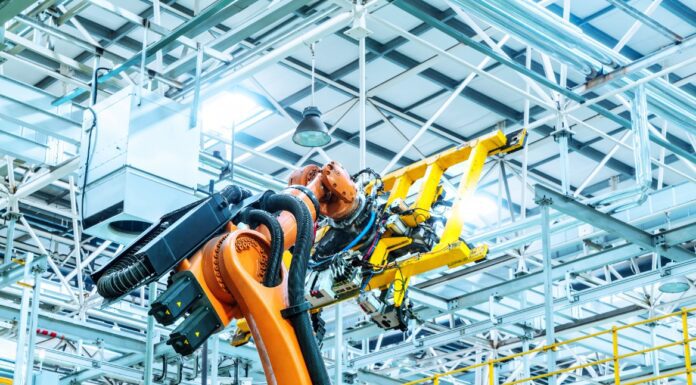
The Port of Newcastle’s Clean Energy Precinct (CEP) has taken a step forward, signing agreements for Front End Engineering Designs (FEED) and Environmental Impact Statements (EIS).
The agreements, which cover electrical infrastructure, water services, general infrastructure, storage, berth facilities, and pipelines, represent a key milestone in the port’s shift toward clean energy, as revealed in a news release.
This progress is backed by a $100 million grant from the Commonwealth Government to prepare the precinct for hydrogen readiness.
Craig Carmody, CEO of the Port of Newcastle, and Federal Member for Newcastle, Sharon Claydon MP, attended the announcement on site.
“[This] is a significant step forward for the Hunter Region,” said Carmody.
“The Clean Energy Precinct is central to the Port of Newcastle’s diversification strategy to create the port that our community, our region, and our state needs for the future.”
“This phase will determine the infrastructure and services critical to the progression of the precinct’s development and push us further towards hydrogen readiness,” Carmody noted.
The CEP, once fully developed, is projected to contribute $4.2 billion to the regional economy and generate 5,800 jobs in the Hunter Region by 2040.
It also aligns with the NSW Government’s objectives to accelerate decarbonisation and clean energy production through the Electricity Infrastructure Roadmap.
Carmody thanked government partners for their backing. “I thank the Commonwealth and NSW Governments for their support, buoyed by our industry partnerships, which have positioned the Port and our entire region as leaders in the future of clean energy production,” he said.
The FEED and EIS studies will be undertaken by Lumea (electrical), CoNEXA (water), and GHD (general infrastructure).
Their findings will guide future site planning and environmental approvals. The precinct aims to enable clean energy production, storage, and export, including green hydrogen and green ammonia.
Federal Member for Newcastle, Sharon Claydon, highlighted the project’s economic and environmental significance.
“The Clean Energy Precinct is a major economic boost for our region. Newcastle and the Hunter have powered Australia for generations. This project ensures we will continue to do so, leading the transition to Net Zero. Establishing the port as a hydrogen exporter will protect and create good local jobs into the future,” Claydon said.
NSW Minister for the Hunter, Yasmin Catley, echoed this sentiment. “The Hunter has powered our state for decades, and we’re ensuring it continues to do so for many years to come.”
“Our energy market is transforming, and this project will support nearly 6,000 local jobs and inject billions into the regional economy,” Minister Catley said.
State Member for Newcastle, Tim Crakanthorp, emphasised the importance of diversification.
“I’ve been working closely with the Port of Newcastle over the last ten years to support them in their diversification away from coal. With Newcastle’s existing infrastructure and skilled workforce, there is no better place in NSW for this precinct,” he noted.
Industry partners also expressed enthusiasm for the project. Lumea’s Executive General Manager, Craig Stallan, said,“We are really excited to be working with the Port of Newcastle on this project and we congratulate them on adopting a hugely progressive approach to electrification of the port.”
“It provides a benchmark for other industrial customers across Australia who are seeking to move towards an electrified future.”
Kurt Dahl, CEO of CoNEXA, added, “As the water services provider for the CEP, we are positioned to integrate water solutions that minimise consumption and maximise recycling. This aligns perfectly with the CEP’s vision and supports the region’s clean energy transition.”
For more information, visit portofnewcastle.com.au/landside/major-projects/clean-energy-precinct.




















